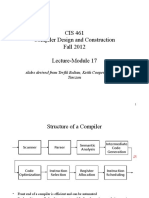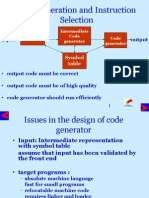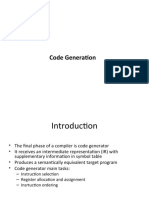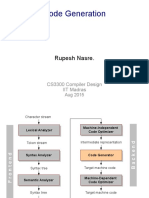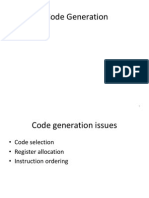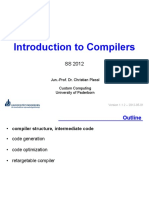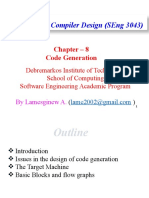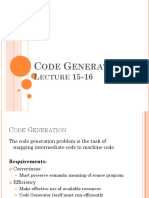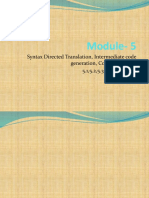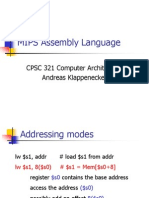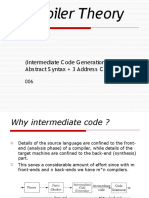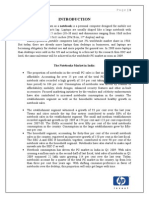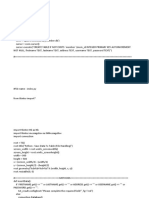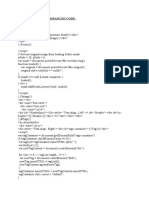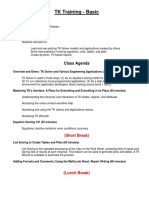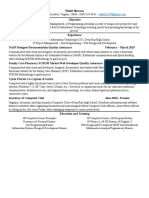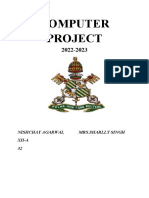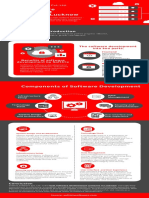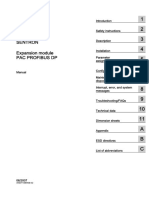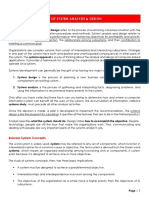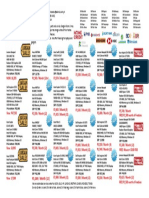0% found this document useful (0 votes)
13 views56 pagesLecture 12
The document covers code generation techniques for a simple programming language, focusing on translating stack machine instructions to MIPS assembly language. It discusses the structure of activation records, function calls, and how to handle variables and temporaries in code generation. Additionally, it introduces object-oriented concepts such as object layout and dynamic dispatch in the context of the Cool programming language.
Uploaded by
itsmeshinooCopyright
© © All Rights Reserved
We take content rights seriously. If you suspect this is your content, claim it here.
Available Formats
Download as PDF, TXT or read online on Scribd
0% found this document useful (0 votes)
13 views56 pagesLecture 12
The document covers code generation techniques for a simple programming language, focusing on translating stack machine instructions to MIPS assembly language. It discusses the structure of activation records, function calls, and how to handle variables and temporaries in code generation. Additionally, it introduces object-oriented concepts such as object layout and dynamic dispatch in the context of the Cool programming language.
Uploaded by
itsmeshinooCopyright
© © All Rights Reserved
We take content rights seriously. If you suspect this is your content, claim it here.
Available Formats
Download as PDF, TXT or read online on Scribd
/ 56

